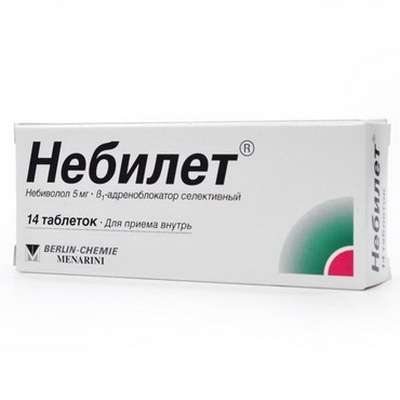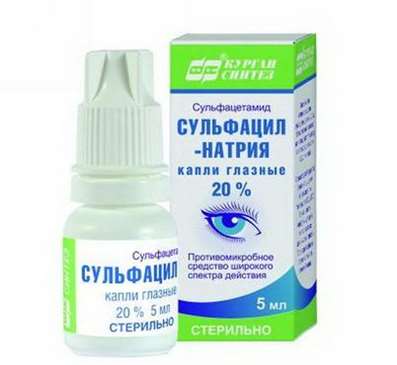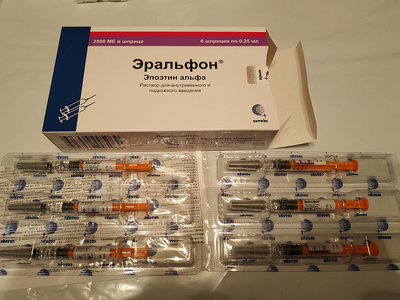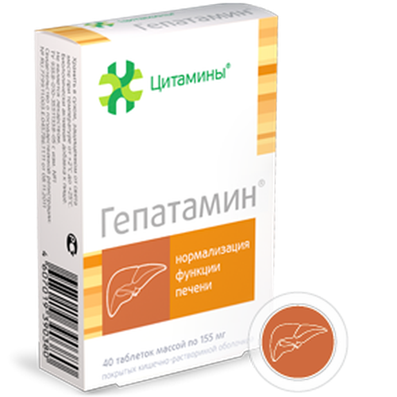Instruction for use: Analgin
I want this, give me price
Active substance Metamizole sodium
ATX Code N02BB02 Metamizole sodium
Pharmacological group
Analgesic non-narcotic agent [NSAIDs - Pyrazolones in combinations]
Nosological classification (ICD-10)
G43 Migraine
The pain of migraine, Migraine, hemiplegic migraine, Migraine headache, A migraine attack, Continuous headache, hemicranias
K08.8.0 * Painful toothache
Dentinal pain, Dentinal pains, Pain pulpitis, Anesthesia in dentistry, Pain syndromes in dental practice, Pain after removal of tartar, Pain when extracting a tooth, Toothache, Pain after dental interventions
K82.8.0 * Dyskinesia of the gallbladder and biliary tract
Biliary obstruction, Biliary reflux gastritis, Biliary reflux esophagitis, biliary sludge, Pain smooth muscle spasm, Pain spasm of smooth muscles (renal and biliary colic, intestinal spasms, dysmenorrhea), Pain spasm of smooth muscles of internal organs, Pain spasm of smooth muscles of internal organs (kidney and biliary colic, intestinal spasms, dysmenorrhea), Gipermotornaya biliary dyskinesia, Hypokinesia of the gall bladder, Hypokinetic dyskinesia of the gallbladder, Biliary dyskinesia, Dyskinesia of the gallbladder,Dyskinesia of biliary tract, biliary colic, Bile reflux,Violation of bile secretion, Violation of the outflow of bile, Subacute and chronic diseases of the biliary tract, The spasm of the biliary tract, Biliary tract spasm, Spastic biliary dyskinesia, Spasmodic dyskinesia of the gallbladder, Spastic condition of the gastrointestinal tract
M79.1 Myalgia
Myofascial pain syndromes ,Pain syndrome in musculo-articular diseases, Pain syndrome in chronic inflammatory diseases of the musculoskeletal system, Pain in the muscles, Tenderness of muscles, Muscular soreness in severe physical exertion, Painful conditions of the musculoskeletal system, Pain in the musculoskeletal system, Pain in the muscles, Pain at rest, Muscle aches, Muscle pain, Musculoskeletal pain, Myalgia, Muscle pain, Muscle pain at rest, Muscle pain, Muscular pain of non-rheumatic origin, Muscle pain of rheumatic origin, Acute muscle pain, Rheumatic pain, Rheumatic pains, Myofascial syndrome, Fibromyalgia
M79.2 Neurology and neuritis, unspecified
Pain syndrome with neuralgia, Brachialgia, Occipital and intercostal neuralgia, Neuralgia, Neuralgic pain, Neuralgia, Neuralgia of intercostal nerves,Neuralgia of the posterior tibial nerve, Neuritis, Neuritis traumatic, Neuritis, Neurological Pain Syndromes, Neurological contractures with spasms, Acute neuritis, Peripheral neuritis,Post-traumatic neuralgia,Severe pain of a neurogenic nature, Chronic neuritis, Essential neuralgia
N23 Renal colic unspecified
Pain in renal colic, Pain smooth muscle spasm, Pain spasm of smooth muscles (renal and biliary colic, intestinal spasms, dysmenorrhea), Pain spasm of smooth muscles of internal organs, Pain spasm of smooth muscles of internal organs (kidney and biliary colic, intestinal spasms, dysmenorrhea), renal Colic, ureteral colic, Renal colic, Renal colic with urolithiasis, Kidney disease, Spasm of smooth muscle in diseases of the urinary system, The spasm of the urinary tract, The spasm of the ureter, The spasm of the ureters, Spasms of the urinary tract, Spasms of the urinary tract
N94.0 Pain in the middle of the menstrual cycle
Algomenorea, Painful menstruation, Menalgia, Pain in menstruation
N94.6 Dysmenorrhea Unspecified
Pain during menstruation, Functional disorders of the menstrual cycle, Menstrual cramps, Emmeniopathy, Pain during menstruation, Painful menstrual irregularities, algomenorrhea, algomenoreya, Pain smooth muscle spasm, Pain spasm of smooth muscles (renal and biliary colic, intestinal spasms, dysmenorrhea), Pain spasm of smooth muscles of internal organs (kidney and biliary colic, intestinal spasms, dysmenorrhea), Disalgomenoreya, dysmenorrhea, Dysmenorrhea (essential) (Exfoliative), menstrual disorder, menstruation painful, metrorrhagia, Violation of the menstrual cycle, Menstrual irregularities, Prolaktinzavisimoe menstrual disorders, Prolaktinzavisimoe menstrual dysfunction, Pain spasm of smooth muscles of internal organs, Spasmodic dysmenorrhea, Primary disalgomenoreya
R50 Fever of unknown origin
Malignant hyperthermia, Hyperthermia malignant
R51 Headache
Pain in the head, Cephalgia, Pain with sinusitis, Pain in the back of the head, Painful headache, Headache of vasomotor genesis, Headache of vasomotor origin, Headache with vasomotor disorders, Headache, Neurological headache, Serial headache
R52.9 Unspecified Pain
Pain after cholecystectomy, Pain shooting, Non-malignant pain, Obstetric and gynecological pain, Pain syndrome, Pain in the postoperative period, Pain in the postoperative period after orthopedic surgery, Pain of inflammatory genesis, Pain than cancer genesis, Pain syndrome after diagnostic procedures, Pain after surgery Diagnostic, Pain after surgery, Pain after orthopedic surgery, Pain after injuries, Pain after the removal of hemorrhoids, Pain at the non-rheumatic inflammation of nature, Pain in inflammatory lesions of the peripheral nervous system, Pain in diabetic neuropathy, Pain in acute inflammatory diseases of the musculoskeletal system, Pain when the tendon pathology, Pain smooth muscle spasm, Pain spasm of smooth muscles (renal and biliary colic, intestinal spasms, dysmenorrhea), Pain spasm of smooth muscles of internal organs, Pain spasm of smooth muscles of internal organs (kidney and biliary colic, intestinal spasms, dysmenorrhea), Pain in trauma syndrome, Pain with injuries and after surgical interventions, Pain in chronic inflammatory diseases of the musculoskeletal system, Pain with duodenal ulcer, Pain syndrome in gastric ulcer, Pain syndrome in gastric ulcer and duodenal ulcer, pain, Pain during menstruation, pain syndromes, painful condition, Painful foot fatigue, Sore gums when wearing dentures, Soreness of the cranial nerves exit points, Painful menstrual irregularities, Painful dressings, Painful muscle spasm, Painful teeth growth, Melosalgia, Pain in the area of the surgical wound, Pain in the postoperative period, Pain in the body, Pain after diagnostic procedures, Pain after orthopedic surgery, Pain after surgery, The pains of the flu, Pain in diabetic polyneuropathy, Pain for burns, Pain during sexual intercourse, Pain during diagnostic procedures, Pain during therapeutic procedures, for colds Pain, Pain in sinusitis, Pain in trauma, Pain traumatic, The pain in the postoperative period, Pain after diagnostic procedures, The pain after sclerotherapy, Pain after surgery, postoperative Pain, Pain postoperative and posttraumatic, posttraumatic pain, Pain when swallowing, Pain in infectious and inflammatory diseases of the upper respiratory tract, The pain of burns, The pain in traumatic muscle injury, Pain in trauma, The pain of tooth extraction, The pain of traumatic origin, Pain caused by spasm of smooth muscles, Expressed pain syndrome, Expressed pain syndrome, traumatic origin, Postoperative pain, Post-traumatic pain, Post-traumatic pain syndrome, Torpid pain, Traumatic pain, Traumatic pain, Mild pain, Moderately severe pain, Moderate pain, Polyarthralgia with polymyositis
Z100 * CLASS XXII Surgical practice
Abdominal surgery, adenomectomy, Amputation, Coronary angioplasty, Angioplasty of the carotid arteries, Antiseptic skin treatment for wounds, Antiseptic Hand, Appendectomy, atherectomy, Balloon coronary angioplasty, Vaginal hysterectomy, The coronary bypass, Interventions in the vagina and cervix, Interventions on the bladder, Intervention in the mouth, Restoration and reconstructive surgery, Hand hygiene of medical personnel, Gynecologic surgery, Gynecological intervention, Gynecological surgery, Hypovolemic shock during operations, Disinfection of purulent wounds, Disinfection of wounds edges, Diagnostic intervention, Diagnostic procedures, Cervical Diathermocoagulation, Long-surgery, Replacing the fistula catheters, Infection in orthopedic surgery, Artificial heart valve, cystectomy, Short-term outpatient surgery, Short-term operation, Short surgical procedures, Krikotireotomiya, Blood loss during surgery, Bleeding during surgery and in the postoperative period, Kuldotsentez, laser photocoagulation, laser coagulation, retinal laser coagulation, Laparoscopy, Laparoscopy in Gynecology, CSF fistula, Small gynecological operations, Small surgical procedures, Mastectomy and subsequent plastic, mediastinotomy, Microsurgical operations on the ear, Mukogingivalnye operation, suturing, Minor surgery, neurosurgical operation, Immobilization of the eyeball in ophthalmic surgery, testectomy, pancreatectomy, Perikardektomiya, The period of rehabilitation after surgery, The period of, convalescence after surgery, Percutaneous transluminal coronary angioplasty, Pleural thoracentesis, Pneumonia postoperative and posttraumatic, Preparation for surgical procedures, Preparation for surgery, Preparation of the surgeon's hands before surgery, Preparation of the colon for surgical procedures, Postoperative aspiration pneumonia in neurosurgical and thoracic surgery, Postoperative nausea, Postoperative bleeding, postoperative granuloma, postoperative shock, The early postoperative period, myocardial revascularization, Radiectomy, gastric Resection, bowel resection, uterine Resection, liver Resection, enterectomy, Resection of part of the stomach, Reocclusion of the operated vessel, Bonding tissues during surgical procedures, Removal of sutures, Condition after eye surgery, Condition after surgery, Condition after surgery in the nasal cavity, Condition after gastrectomy, Status after resection of the small intestine, Condition after tonsillectomy, Condition after removal of the duodenum, Condition after phlebectomy, Vascular surgery, Splenectomy, Sterilization of surgical instruments, Sterilization of surgical instruments, sternotomy, Dental surgery, Dental intervention in periodontal tissues, strumectomy, Tonsillectomy, Thoracic surgery, total gastrectomy, Transdermal intravascular coronary angioplasty, Transurethral resection, Turbinektomiya, Removal of a tooth, cataract surgery, Removal of cysts, tonsillectomy, Removal of fibroids, Removing the mobile primary teeth, Removing polyps, Removing broken tooth, Removal of the uterus body, Removal of sutures, Urethrotomy, Fistula likvoroprovodyaschih ways, Frontoetmoidogaymorotomiya, Surgical infection, Surgical treatment of chronic limb ulcersm, Surgery, The surgery in the anal area, The surgery on the colon, Surgical practice, The surgical procedure, Surgical interventions, Surgery on the gastrointestinal tract, Surgical procedures on the urinary tract, Surgical procedures on the urinary system, Surgical intervention of the genitourinary system, Surgical procedures on the heart, Surgical manipulation, surgery, Surgery on the veins, Surgical intervention, Vascular surgery, Surgical treatment of thrombosis, cholecystectomy, Partial gastric resection, transabdominal hysterectomy, Percutaneous transluminal coronary angioplasty, Percutaneous transluminal angioplasty, Coronary artery bypass, tooth Extirpation, Extirpation of milk teeth, pulpectomy, pulsative cardiopulmonary bypass, tooth Extraction, teeth Extraction, cataract extraction, Electrocoagulation, endourological intervention, episiotomy, Etmoidotomiya, Complications after tooth extraction
Composition and form of release
Tablets 1 table.
active substance
metamizole sodium (analgin) 0.5 g
auxiliary substances: potato starch; sugar; calcium stearate; talc
in a contiguous cellless or cell pack of 10; in a pack of cardboard 1, 2, 3 or 5 packages.
Description of dosage form
Tablets are white or slightly yellowish in color, flat-cylindrical, with a risk and facet, bitter taste.
pharmachologic effect
Pharmacological action - analgesic.
Pharmacodynamics
Metamizole sodium is a derivative of pyrazolone. It has analgesic, antipyretic and weak anti-inflammatory action, the mechanism of which is associated with inhibition of PG synthesis (prostaglandins). Pharmacological action develops in 20-40 minutes after taking the drug and reaches a maximum after 2 hours.
Indications
Pain syndrome of different etiology:
headache;
migraine pain;
toothache;
neuralgia;
myalgia;
algodismenorea;
postoperative pain;
renal and biliary colic (in combination with antispasmodics);
feverish conditions with infectious and inflammatory diseases.
Contraindications
hypersensitivity to pyrazolone derivatives (butadione, tribuzone);
bronchial asthma;
diseases accompanied by bronchospasm;
Aspirin asthma;
oppression hemopoiesis (agranulocytosis, neutropenia, leukopenia);
severe dysfunction of the liver or kidney;
blood diseases;
hereditary hemolytic anemia associated with a deficiency of glucose-6-phosphate dehydrogenase;
pregnancy (especially in the first trimester and in the last 6 weeks);
lactation period.
With caution - the infant age (up to 3 months).
pregnancy and lactation
Contraindicated in pregnancy (especially in the first trimester and in the last 6 weeks). For the duration of treatment, breastfeeding should be discontinued.
Side effects
Allergic reactions: skin rash, angioedema; rarely - anaphylactic shock, toxic epidermal necrolysis (Lyell's syndrome), in rare cases - Stevens-Johnson syndrome.
With prolonged use, there may be leukopenia, thrombocytopenia, agranulocytosis.
With propensity to bronchospasm may provoke an attack; a decrease in blood pressure.
There may be a violation of kidney function, oliguria, anuria, proteinuria, interstitial nephritis, staining of urine in red due to the release of a metabolite.
About all side effects (unusual), incl. not mentioned above, you should inform your doctor and stop taking the drug.
Interaction
Simultaneous use of Analgin with other non-narcotic analgesics can lead to mutual enhancement of toxic effects.
Tricyclic antidepressants, oral contraceptives and allopurinol disrupt metamizole metabolism in the liver and increase its toxicity.
Barbiturates and phenylbutazone weaken the action of analgin.
Analgin increases the effects of alcohol-containing beverages.
Radiocontrast agents, colloidal blood substitutes and penicillin should not be used during metamizole treatment.
Metamizole, displacing from the connection with protein oral hypoglycemic drugs, indirect anticoagulants, GCS and indomethacin, increases their activity.
Simultaneous use of Analgin with cyclosporine reduces the level of the latter in the blood. Thiamazole and sarcolysin increase the risk of developing leukopenia. The effect is enhanced by codeine, propranolol (slows inactivation).
Sedatives and tranquilizers increase the analgesic effect of analgin.
Dosing and Administration
Inside, adults - 1 tab. 2-3 times a day after meals. The maximum single dose is 1 g (2 tablets), daily - 3 g (6 tables). With prolonged (more than a week) application of the drug, control of the picture of peripheral blood and the functional state of the liver is necessary.
Children are prescribed 5-10 mg / kg body weight 3-4 times a day for not more than 3 days (previously crushed tablet).
Do not use (without consulting a doctor) more than 3 days when prescribed as an antipyretic agent and more than 5 days - when prescribed as an anesthetic.
Overdose
Symptoms: with prolonged use of the drug (more than 7 days) in large doses - nausea, vomiting, gastralgia, oliguria, hypothermia, lowering blood pressure, tachycardia, dyspnea, tinnitus, drowsiness, delirium, impaired consciousness, agranulocytosis, hemorrhagic syndrome, acute renal and / or hepatic insufficiency, convulsions, paralysis of the respiratory musculature.
Treatment: induce vomiting, rinse the stomach, take saline laxatives, activated charcoal. In the conditions of the medical institution - carrying out forced diuresis, hemodialysis, with the development of convulsive syndrome - IV injection of diazepam and barbiturates.
special instructions
In patients suffering from bronchial asthma and pollinosis, the development of hypersensitivity reactions is possible.
With long-term use (more than 7 days), you need to monitor the picture of peripheral blood.
Do not apply to relieve acute pain in the abdomen (until finding out the reasons).
When treating children under 5 years and patients receiving cytotoxic drugs, the use of metamizole sodium should only be done under the supervision of a doctor.
Special caution is required when prescribing to patients who abuse alcoholic beverages.
Children up to 2 years are recommended to use children's dosage forms.
Children and adolescents under 18 years of age should be used only as prescribed by the doctor.
storage Conditions
In a dry place protected from light.
Keep out of the reach of children.
Shelf life
5 years.
Do not use after the expiry date printed on the package.

 Cart
Cart





